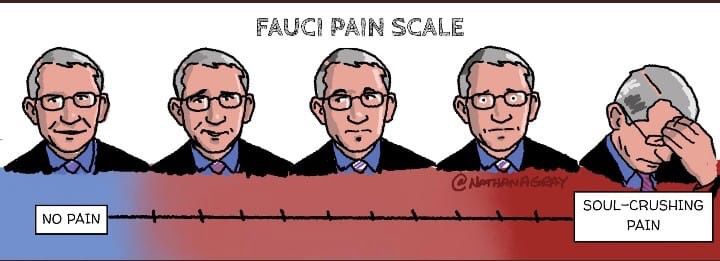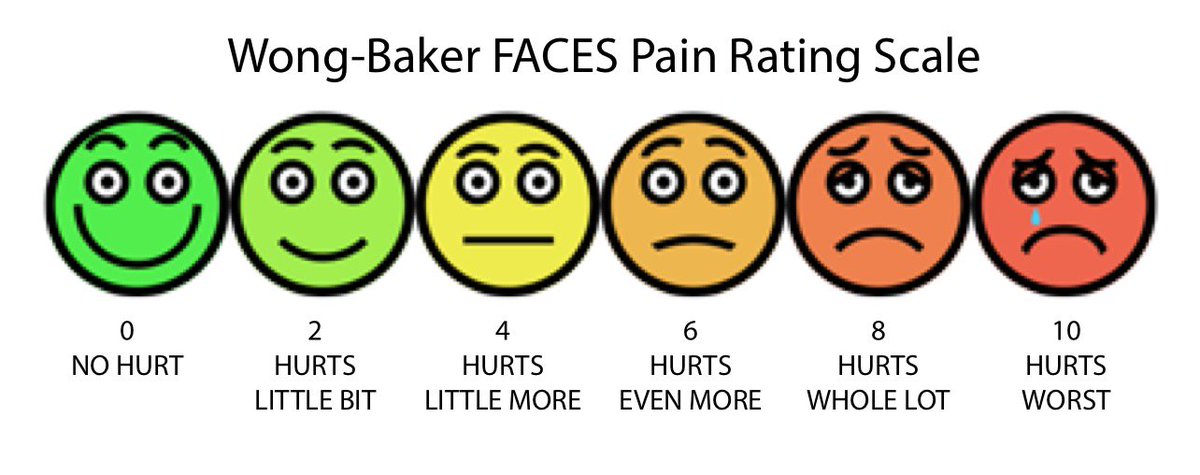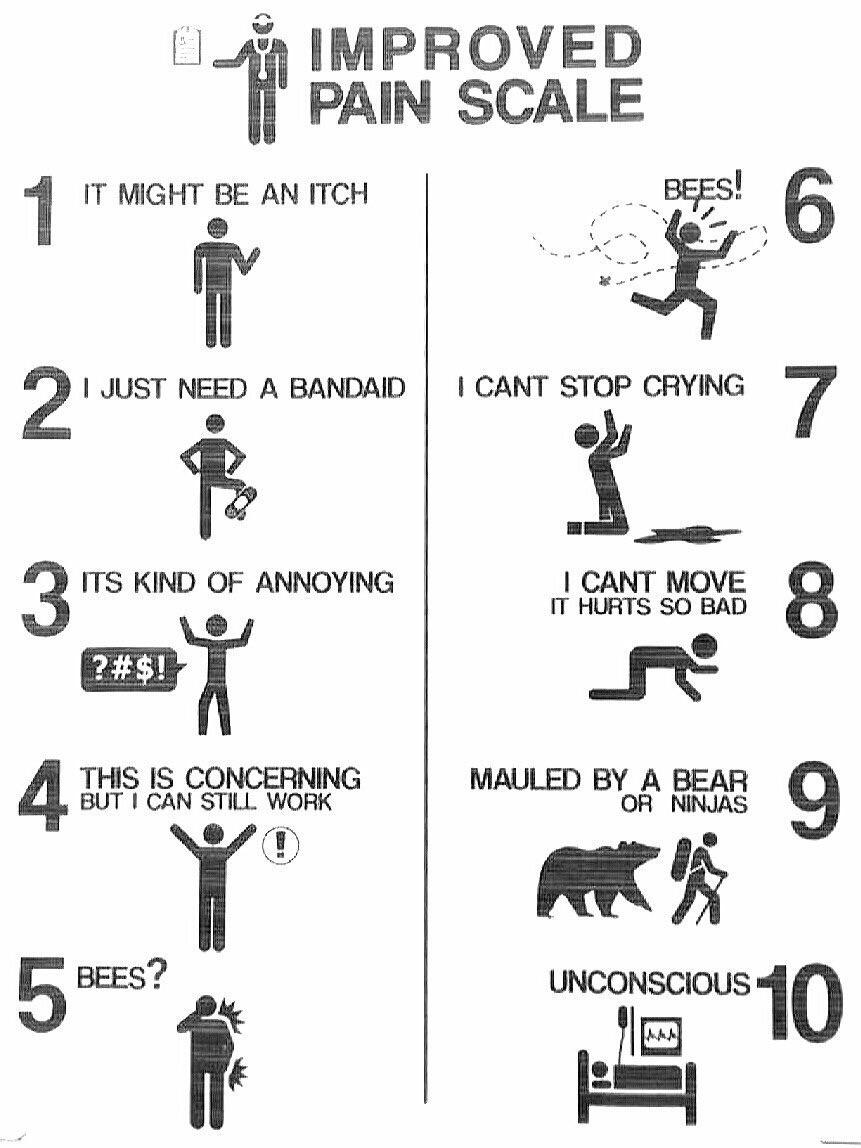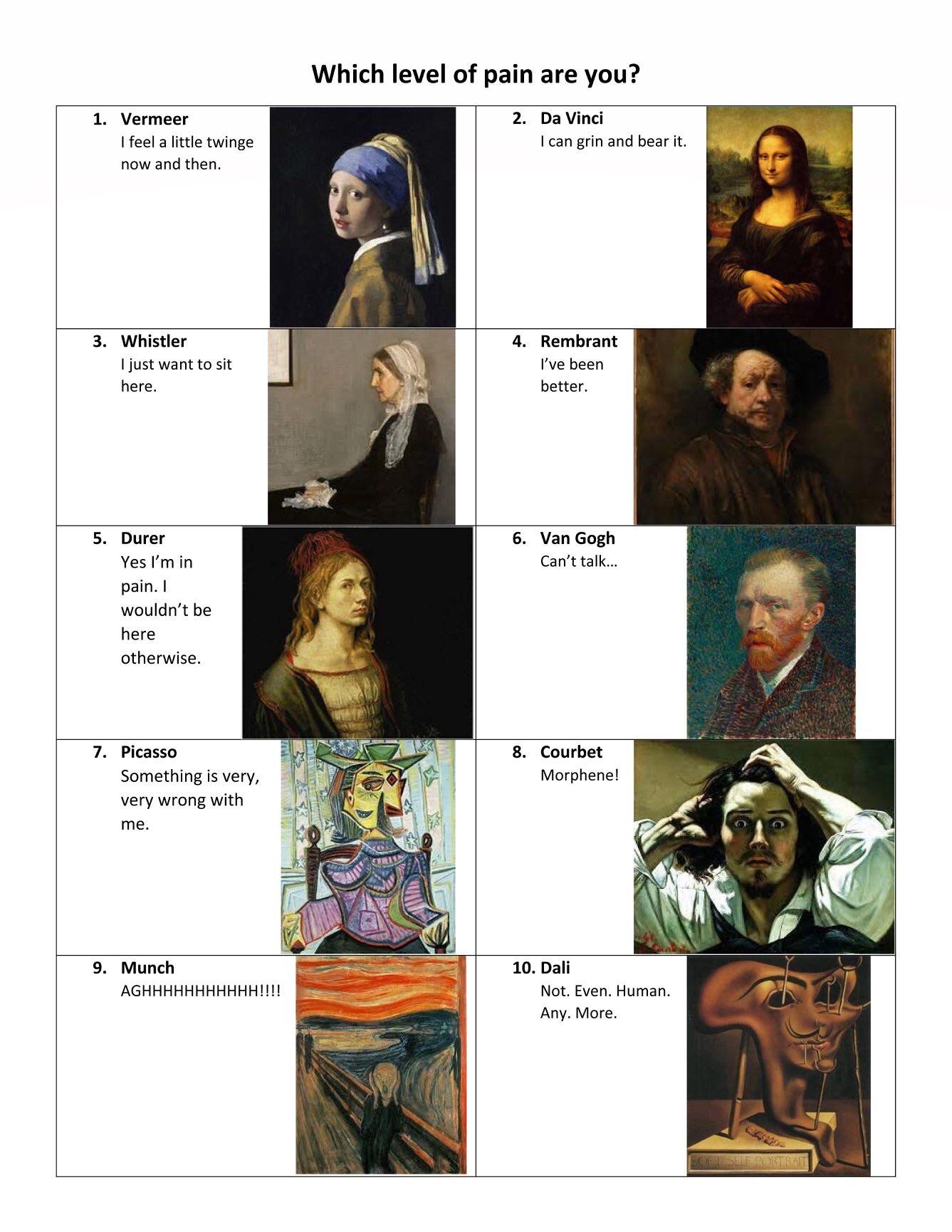Pain Scale Art and Humor
One of our physical therapists here at FYZICAL Grand Lake Oakland typically had various cartoons or humorous images taped up in the treatment room where she usually worked. She showed up at a staff meeting a while ago with 2 different versions of the pain scale. Not that pain is a laughing matter, but these were hilarious. That set me off on a search for other pain scales, and as it turns out, there are some very creative people out there!
So, to get the ball rolling, take a look at this one depicting the immunologist, Anthony Fauci MD, the long-standing director of the National Institute of Allergy and Infectious Diseases. What a challenging role he has found himself in during the COVID-19 pandemic! We are grateful for his level-headed and science-informed voice of reason.

(Source: Nathan Gray, MD)
Pain is a subjective experience. At a basic level, it is a protective mechanism. Having said that, there is a physiological stress response that tends to occur when pain is experienced (includes increased heart and breathing rates to facilitate increasing demands of oxygen and other nutrients to vital organs). Failure to relieve pain over time produces a prolonged stress state, which can result in harmful multisystem effects. (www.ncbi.nlm.nih.gov). Pain research, and pain neuroscience education, has seen a lot of attention from the physical therapy community over the past 15 years or so. If you are interested in learning more, please visit our resources page for some short and informative links to articles and videos about this topic RESOURCE PAGE LINK.
Chances are, at some point in your interactions with health care professionals, you have been asked to rate your pain (or symptoms) on a scale of 0-10 out of 10. Giving a numeric value to pain helps quantify the degree and severity of your pain experience. Physical therapists work very largely with problems involving pain and loss of function. Physical therapists tend to ask more detailed questions about symptoms, for example, like quality (e.g. sharp / ache / dull), constant or intermittent, and how different pain areas relate to each other. You may also be asked about how you could rate your pain at its Best, its Worst, and what it is Right Now. This information is helpful not only in understanding the problem in the evaluation, but also gives a yardstick by which to measure progress in subsequent visits.
There is no right or wrong when it comes to the pain scale. The point of reference is the client, and is not a comparison to anyone else. I routinely ask the question “ How would you rate your pain on a scale of zero to ten out of ten, where zero is no pain, and 10 would be emergency room pain?” I have had clients clearly in a great deal of discomfort rate their pain a 2. Another may be sitting calmly in a chair conversing with me and rate their pain a 10. Others may use an extremely painful experience as a point of reference, such as passing a kidney stone, or childbirth, and rate their current pain based on that. It is all valid, if the same reference point is used. So, you may hear your physical therapist ask a question something like this “ When you first came in you rated your pain with your head turn left at a 6 out of 10. What would you rate it now?”
“A picture is worth a thousand words” as the saying goes. Pain scales may be depicted in images as you can see by the Fauci scale above. The Wong-Baker FACES pain scale is well known (www.wongbakerfaces.org). It was initially developed in 1983 to help children effectively communicate their pain. Young children have extreme difficulty using any scale with unfamiliar words, or scales based of numbering or ranking concepts. However, they were able to respond well to facial expressions and tears. See the Wong-Baker FACES scale below, with an additional extra from the infamous "Grumpy Cat", whose resting face is arguably an 8. Note also the use of color. Sometimes pain is described to me in terms of color or sound.


Adding images and words to numbers makes pain scales more descriptive and generally easier to use. (Source for the images below are unknown).
I saved my favorite for last, which is this one depicting paintings from various different art masters. There is some truth in the saying that “Laughter is the best medicine”! Laughter decreases stress hormones and increases immune cells and infection-fighting antibodies, thus improving your resistance to disease. Laughter triggers the release of endorphins, the body's natural feel-good chemicals. Endorphins promote and overall sense of well-being and can even temporarily relieve pain (www.helpguide.org).


Author: Kathryn Thornburg, DPT, OCS, FAAOMPT
Co-owner Fyzical Grand Lake Oakland